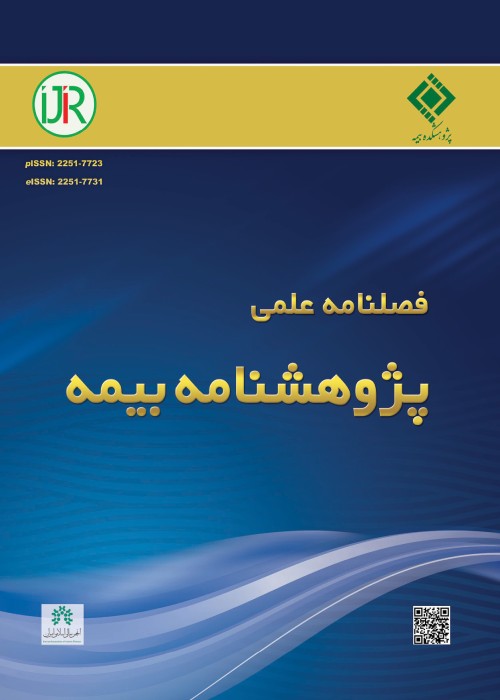Estimation of the parameters of Weibull distribution and net premium against outliers
Author(s):
Article Type:
Research/Original Article (دارای رتبه معتبر)
Abstract:
BACKGROUND AND OBJECTIVES
Weibull distribution, introduced by a Swedish physicist named Weibull, is the most common model used in studies of reliability, longevity, quality control. It is widely used in various fields of science including insurance, medicine, and engineering . This distribution is flexible enough to model different data. The main goal of this research is to calculate insurance premiums and estimate Weibull distribution parameters using various estimation methods.METHODS
In this article, the parameters of Weibull distribution and net premium have been estimated using moment estimation, maximum likelihood, least squares of error, weighted least squares, percentage, Cramer-Von- Mises, mixture of moment and maximum-likelihood against outliers. R software was used for simulation and numerical calculations purposes and also Easyfit software was used to fit Weibull distribution to the real example data. In the end, two real data examples for obtaining various estimators of the premium in case of unknown parameters β and θ and known α are presented.FINDINGS
In this research bias, the mean square error of net premium and unknown parameters β and θ were obtained using different estimators for Weibull distribution data as well as the generalized variance of unknown parameters β and θ.CONCLUSION
In this part, the evaluation and comparison of the estimators using real and simulated data was done, which was obtained by different for real data. For example, in the moment method, was equal to 5, based on which the net premium is 3.37657. In the simulated data, according to k (number of outliers), n (sample size) and β and θ values, bias values, mean squared error and generalized variance of premium and different estimators were obtained. As an example, for n=10, k=1, β=1.5, θ=3 and α=70, by comparing the bias and generalized variance of the estimators, we come to the conclusion that based on the bias, the percentile estimator has a better performance than the other estimators. Simply put, it has less bias and according to the generalized variance, the maximum likelihood estimator has a better performance than other estimators and the estimators are consistent (the generalized variance decreases with the increase of the sample size). Based on the mean square error, the moment estimation has a better performance than other estimators.Keywords:
Language:
Persian
Published:
Iranian Journal of Insurance Research, Volume:39 Issue: 1, 2023
Pages:
43 to 60
magiran.com/p2659013
دانلود و مطالعه متن این مقاله با یکی از روشهای زیر امکان پذیر است:
اشتراک شخصی
با عضویت و پرداخت آنلاین حق اشتراک یکساله به مبلغ 1,390,000ريال میتوانید 70 عنوان مطلب دانلود کنید!
اشتراک سازمانی
به کتابخانه دانشگاه یا محل کار خود پیشنهاد کنید تا اشتراک سازمانی این پایگاه را برای دسترسی نامحدود همه کاربران به متن مطالب تهیه نمایند!
توجه!
- حق عضویت دریافتی صرف حمایت از نشریات عضو و نگهداری، تکمیل و توسعه مگیران میشود.
- پرداخت حق اشتراک و دانلود مقالات اجازه بازنشر آن در سایر رسانههای چاپی و دیجیتال را به کاربر نمیدهد.
In order to view content subscription is required
Personal subscription
Subscribe magiran.com for 70 € euros via PayPal and download 70 articles during a year.
Organization subscription
Please contact us to subscribe your university or library for unlimited access!


